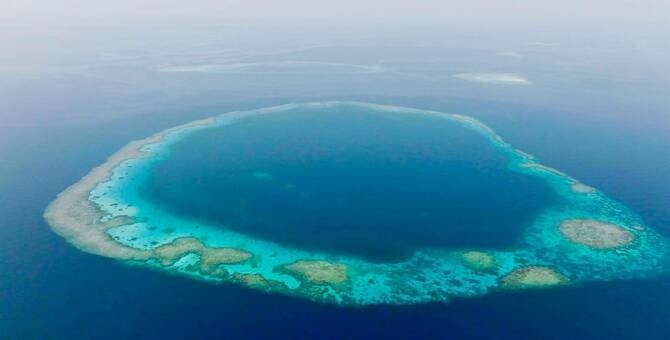Saudi Arabia Protects Rare Marine Ecosystems with Two New Marine Reserves
Riyadh – Saudi Arabia has taken a major step toward environmental protection and marine sustainability by adding two exceptional marine sites — Ras Hatiba and the Blue Holes — to its national list of reserves.
This strategic decision highlights the Kingdom’s growing commitment to preserving its natural heritage and achieving the Vision 2030 goal of protecting 30 percent of its land and sea areas.
The two new reserves are vital for maintaining marine biodiversity and supporting ecosystems that thrive along the Red Sea coast. These areas are known for their rich marine life, coral reefs, and stunning underwater landscapes that attract both scientists and nature enthusiasts.
The announcement marks another positive milestone in Saudi Arabia’s efforts to safeguard its environment while promoting sustainable tourism.
Located northwest of Jeddah, Ras Hatiba spans over 5,700 square kilometers of diverse habitats.
It includes extensive coral reefs, mangrove forests, and seagrass meadows — all crucial ecosystems that support endangered species such as green turtles, dugongs, dolphins, whales, and sharks.
The reserve’s pristine environment also plays a vital role in carbon absorption and coastal protection, making it an essential part of the country’s ecological balance.
Meanwhile, the Blue Holes marine reserve is a natural wonder of geological and biological significance. These rare circular formations, found along the southern Red Sea coast, were first identified in 2022.
Scientists have discovered more than 20 of these formations, each hosting unique ecosystems teeming with marine life including colorful fish, invertebrates, and sea mammals. Their discovery has opened a new chapter for Saudi marine research and ocean conservation.
By designating these two areas as protected zones, the Kingdom is moving closer to its target of 30 percent protection coverage by 2030.
Currently, nature reserves cover over 16 percent of the country’s total area — a significant leap from just a few years ago.
This increase underscores the government’s commitment to advancing sustainable development goals, promoting eco-tourism, and ensuring the long-term health of the nation’s marine resources.
These conservation efforts are aligned with Vision 2030’s Green Initiative, which emphasizes biodiversity protection, renewable energy, and reducing the impacts of climate change.
Protecting Ras Hatiba and the Blue Holes will not only preserve marine ecosystems but also help create eco-friendly opportunities for tourism, research, and community engagement.
Saudi authorities have also emphasized that local communities will play a role in maintaining these reserves. Through education and involvement in sustainable practices, citizens and visitors will be encouraged to contribute to marine conservation efforts.
This collaborative approach ensures that economic growth, tourism, and environmental responsibility coexist harmoniously.
The Kingdom’s bold environmental steps send a strong message of leadership in marine conservation across the region.
By protecting coral reefs and blue holes, Saudi Arabia is setting a global example of how economic progress can go hand-in-hand with nature preservation.
These efforts also enhance the country’s reputation as a forward-looking nation investing in both its people and the planet.
In the coming years, experts expect the Ras Hatiba and Blue Holes reserves to become global centers for marine research, biodiversity education, and eco-tourism.
With world-class scientific studies and carefully planned management, Saudi Arabia’s marine reserves could become models of sustainability for other coastal nations.
The inclusion of these two stunning marine reserves reflects a hopeful vision — one where development and conservation work together for the benefit of future generations.
By protecting these rare ecosystems, Saudi Arabia reaffirms its commitment to nurturing its natural treasures while moving steadily toward a greener, more sustainable future.


